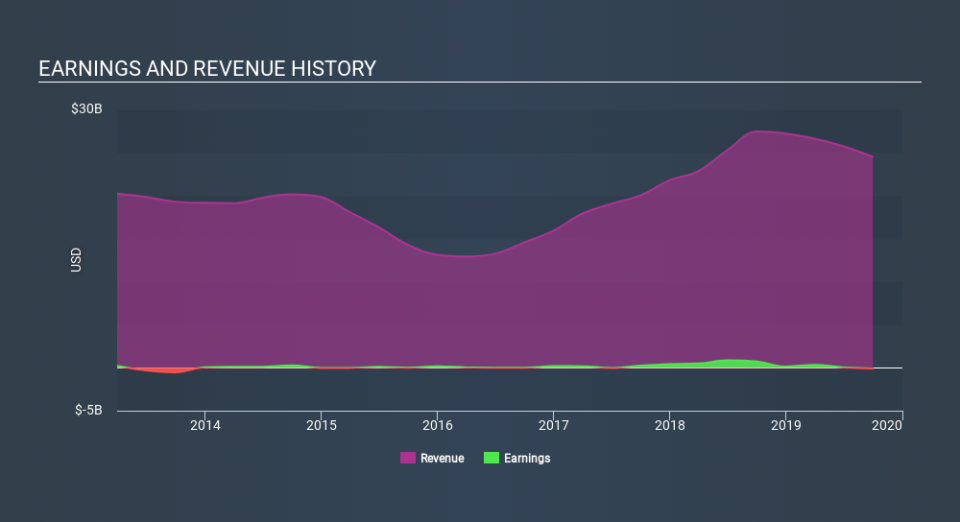How Does PBF Energy Inc. (NYSE:PBF) Affect Your Portfolio Volatility?

Anyone researching PBF Energy Inc. (NYSE:PBF) might want to consider the historical volatility of the share price. Modern finance theory considers volatility to be a measure of risk, and there are two main types of price volatility. First, we have company specific volatility, which is the price gyrations of an individual stock. Holding at least 8 stocks can reduce this kind of risk across a portfolio. The other type, which cannot be diversified away, is the volatility of the entire market. Every stock in the market is exposed to this volatility, which is linked to the fact that stocks prices are correlated in an efficient market.
Some stocks mimic the volatility of the market quite closely, while others demonstrate muted, exagerrated or uncorrelated price movements. Beta is a widely used metric to measure a stock's exposure to market risk (volatility). Before we go on, it's worth noting that Warren Buffett pointed out in his 2014 letter to shareholders that 'volatility is far from synonymous with risk.' Having said that, beta can still be rather useful. The first thing to understand about beta is that the beta of the overall market is one. Any stock with a beta of greater than one is considered more volatile than the market, while those with a beta below one are either less volatile or poorly correlated with the market.
Check out our latest analysis for PBF Energy
What PBF's beta value tells investors
Given that it has a beta of 1.59, we can surmise that the PBF Energy share price has been fairly sensitive to market volatility (over the last 5 years). Based on this history, investors should be aware that PBF Energy are likely to rise strongly in times of greed, but sell off in times of fear. Share price volatility is well worth considering, but most long term investors consider the history of revenue and earnings growth to be more important. Take a look at how PBF Energy fares in that regard, below.
Does PBF's size influence the expected beta?
PBF Energy is a fairly large company. It has a market capitalisation of US$3.8b, which means it is probably on the radar of most investors. It has a relatively high beta, suggesting it may be somehow leveraged to macroeconomic conditions. For example, it might be a high growth stock with lots of investors trading the shares. It's notable when large companies to have high beta values, because it usually takes substantial capital flows to move their share prices.
What this means for you:
Since PBF Energy has a reasonably high beta, it's worth considering why it is so heavily influenced by broader market sentiment. For example, it might be a high growth stock or have a lot of operating leverage in its business model. This article aims to educate investors about beta values, but it's well worth looking at important company-specific fundamentals such as PBF Energy’s financial health and performance track record. I urge you to continue your research by taking a look at the following:
Future Outlook: What are well-informed industry analysts predicting for PBF’s future growth? Take a look at our free research report of analyst consensus for PBF’s outlook.
Past Track Record: Has PBF been consistently performing well irrespective of the ups and downs in the market? Go into more detail in the past performance analysis and take a look at the free visual representations of PBF's historicals for more clarity.
Other Interesting Stocks: It's worth checking to see how PBF measures up against other companies on valuation. You could start with this free list of prospective options.
If you spot an error that warrants correction, please contact the editor at editorial-team@simplywallst.com. This article by Simply Wall St is general in nature. It does not constitute a recommendation to buy or sell any stock, and does not take account of your objectives, or your financial situation. Simply Wall St has no position in the stocks mentioned.
We aim to bring you long-term focused research analysis driven by fundamental data. Note that our analysis may not factor in the latest price-sensitive company announcements or qualitative material. Thank you for reading.

 Yahoo Finance
Yahoo Finance 
